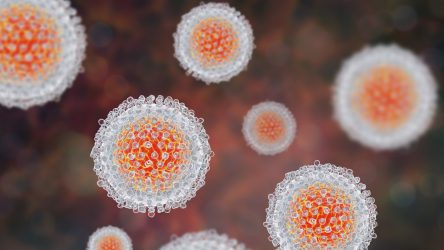
When a virus infects a host cell, it hijacks the biosynthetic capacity of the cell to produce virus progeny, a process that may take less than an hour or more than a week. The overall time required for a virus to reproduce depends collectively on the rates of multiple steps in the infection process, including initial binding of the virus particle to the surface of the cell, virus internalization and release of the viral genome within the cell, decoding of the genome to make viral proteins, replication of the genome, assembly of progeny virus particles, and release of these particles into the extracellular environment. For a large number of virus types, much has been learned about the molecular mechanisms and rates of the various steps. However, in only relatively few cases during the last 50 years has an attempt been made—using mathematical modeling—to account for how the different steps contribute to the overall timing and productivity of the infection cycle in a cell.
In a review in the journal Microbiology and Molecular Biology Reviews, undergraduate student Jacob Redovich and his advisor, professor of chemical and biological engineering John Yin, examine the initial case studies, which include studies of the one-step growth behavior of viruses that infect bacteria (Qβ, T7, and M13), human immunodeficiency virus, influenza A virus, poliovirus, vesicular stomatitis virus, baculovirus, hepatitis B and C viruses, and herpes simplex virus. Further, they consider how such models enable one to explore how cellular resources are utilized and how antiviral strategies might be designed to resist escape, and they highlight challenges and opportunities at the frontiers of cell-level modeling of virus infections.


You must be logged in to post a comment.